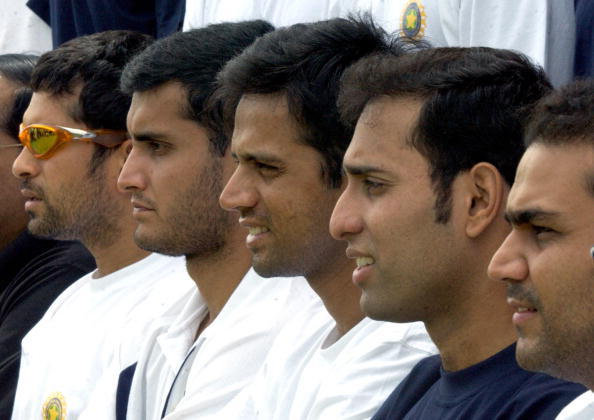Then and now – India's rise to No.1 spot in 2009 and in 2016
History is repeating itself so far. Similar patterns exist between India's rise to the top of the ICC Test Rankings in 2009, and their return now to the top of the chart after the second Test against New Zealand. But can this Indian team match the glory days of 2009?

According to Friedrich Nietzsche's Doctrine of Eternal Recurrence, "Time is a flat circle. Everything we have done or will do, we will do over and over and over again- forever."—which translates to the fact that history has a tendency of repeating itself. However, Mark Twain believed, “History doesn't repeat itself but it often rhymes.”
Napolean Bonaparte and Adolf Hitler failed in a similar manner—both sent their troops into battle ill-prepared for the impending winter in Russia. The 'Great Recession' of 2007 has been seen by many as the repeat of the 'Great Depression' in the 1930s—both came as a result of Banking greed. Historical rhymes or general human tendency to look for patterns?
Similar patterns exist between India's rise to the top of the ICC Test Rankings in
It was the worst of times in 2000. The match-fixing scandal had rocked Indian cricket. Sachin Tendulkar had stepped down from his captaincy, and India
Move forward to the period from 2011 to 2014—Aging legends Sachin Tendulkar, Rahul Dravid, VVS Laxman, Virender Sehwag, and Zaheer Khan were phased out of the team during this period. India
History continued to rhyme, though.
Two men, who were, initially, perceived to be too arrogant and brash for the gentlemanly game of cricket, took over the reins of the Indian cricket team during both these tumultuous periods.
Two men, who were, initially, perceived to be too arrogant and brash for the gentlemanly game of cricket, took over the reins of the Indian cricket team during both these tumultuous periods—Sourav Ganguly in 2000 and Virat Kohli in 2015. Arrogance, though, is accompanied by undying self-belief—and that is what Indian cricket needed during both these times.
Ganguly's Indian team's journey to the top was more perilous and took longer. In fact, by the time his team made it to the top in 2009, for the first time since ICC's Test rankings came into existence, Ganguly had retired from international cricket. MS Dhoni was the skipper, but the groundwork for it had been laid long back.
Under Ganguly's captaincy, the team stopped an all-conquering Australian side from capturing their final frontier—India. Then the team went to Australia's backyard and an unlikely series win was well within their reach until that final day at SCG. They won their first series in
Virat Kohli, on the other hand, had a blueprint to follow. After a period of defensive captaincy in the longer format of the game under MS Dhoni, Kohli arrived like a breath of fresh air with his uninhibited aggression. He announced his arrival at the helm with a century against Australia, and it did not
That series started the downfall of the Indian team, who were No.1 in Tests for two years, and, incidentally, that was also the series when Virat Kohli made his Test debut. Four years later, India won its first away Test series in four years under the captaincy of Kohli in Sri Lanka. They conquered a world-class South African side at
Murali Vijay, Ishant Sharma, and the recently-recalled Gautam Gambhir are the only players remaining in this Indian squad who were present in the team when they reached the No.1 spot in 2009. Amit Mishra was mostly a fringe player back then, and he still remains so.
Comparing two teams from two different eras is a difficult task. The sport in itself has changed a lot over the last decade. The pitches are different, opponents are different, and so is the interest in the Test format itself.
The batting lineup of that team from 2009 contained what was arguably the best middle-order in Indian cricket's history. The
Compared to that squad, this current Indian team looks average despite the fact that most of these players are supposed to be in their primes given their age.
Compared to that squad, this current Indian team looks average despite the fact that most of these players are supposed to be in their primes given their age. They are too dependent on Ravichandran Ashwin to pick up wickets in a match, and they rely a bit too much on Cheteshwar Pujara and Ajinkya Rahane to score the runs. Even Virat Kohli, India's best batsman at the moment, has not quite been able to transfer his sublime form in the limited overs format
On paper, that Indian team is way ahead in terms of quality. However, that difference also hints at the general drop in the quality of cricketers, and cricket in general, over the past decade. The England team or the Australian team that the Indian team of 2009 had faced was so superior to their respective teams now. But then again, you can only eat what is being served.
However, even this Indian team can match the pinnacle reached by the previous team. Of course, tougher challenges await them. How they perform away from home in England, Australia, and South Africa would decide how big this team's legacy would be—that is where the difference between good teams and great teams lie.

Comments
Sign up or log in to your account to leave comments and reactions
0 Comments